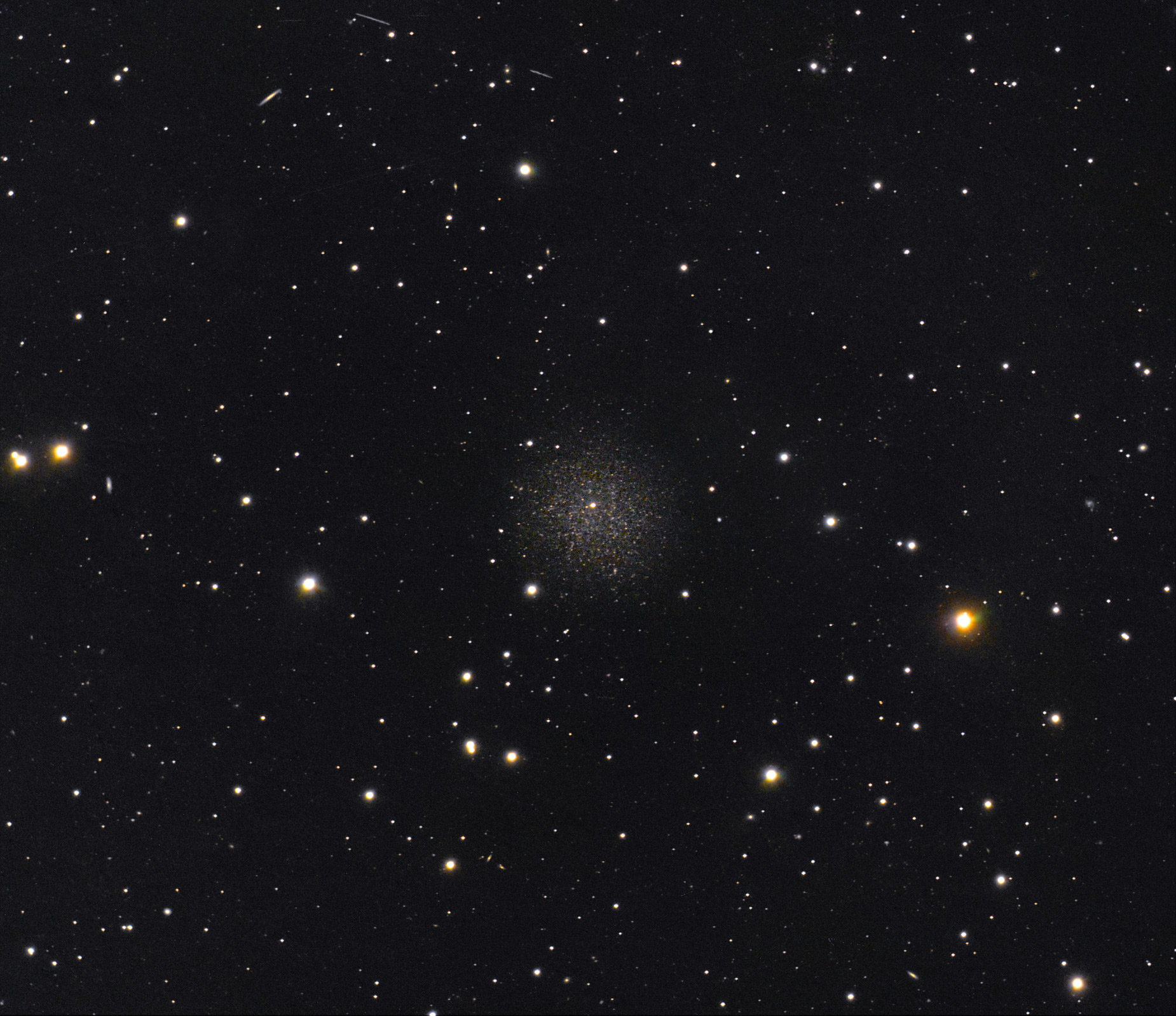

| Telescope | Explore Scientific David H. Levy Comet Hunter Maksutov-Newtonian 152mm f/4.8 mounted piggyback on Meade LX 200 Classic 12 inch |
| Camera | Canon XT/350d modified with Baader type 1 filter by Hap Griffin |
| Exposure | 42 five-minute sub-exposures at iso 1600 plus 71 three-minute subs at iso 1600, 7 hours 13 minutes |
| Guiding | PHD Guide from Stark labs with Meade DSI pro I on Meade 12-inch LX 200 Classic at f/3.3 |
| Software | Images acquired, calibrated, stacked and color corrected with Nebulosity 2.2.7 from Stark Labs. Further processing in Photoshop CS 3. |
| on-line links to more information | for more information try Google for Leo II galaxy |